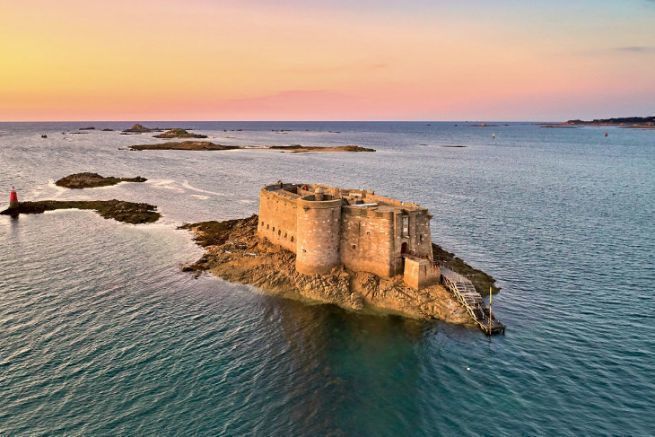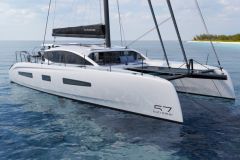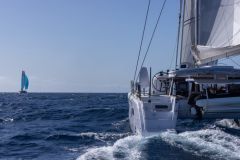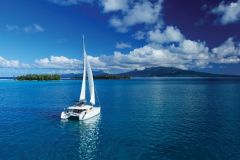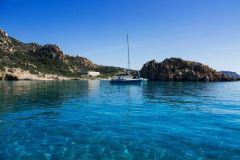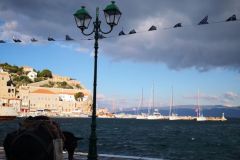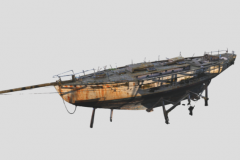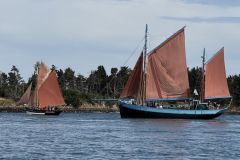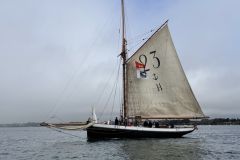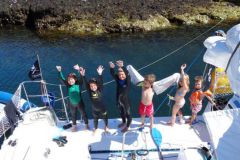Marine protection
Maritime fortifications have existed for centuries as key elements in the defense of coastlines and ports. If Vauban is the most famous expert in poliorcetics (the art of organizing the attack or the defense during the siege of a city, a place or a stronghold) charged by King Louis XIV to set up a series of defenses, he is not the only one of the craftsmen of these numerous forts and citadels protecting the arsenals and other key points of the French coasts.
Let us recall that Vauban's strategy was not to create impregnable fortresses, but buildings that would require ten times more men to take ( and therefore of efforts ) to the attackers than there were men to attack. This is where the principles of concentric defenses such as the Fort de La Prée came from.
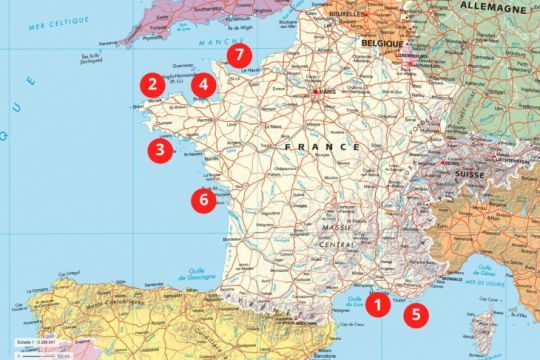
The Yew Castle (1)
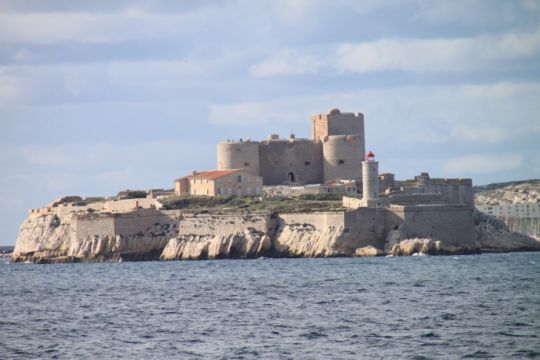
Between 1524 and 1531, Francis I had this citadel built off the coast of the city of Marseille with the threefold objective of protecting Marseille, providing an anchorage for the royal fleet and covering the exits from the neighboring city.
Successively stronghold, prison and mythical place (the account of Monte Cristo, Edmond Dantes, is designated prisoner of the castle in the novel written in 1844 by Alexandre Dumas), the castle of If can be reached by boat, from the old port of Marseille.
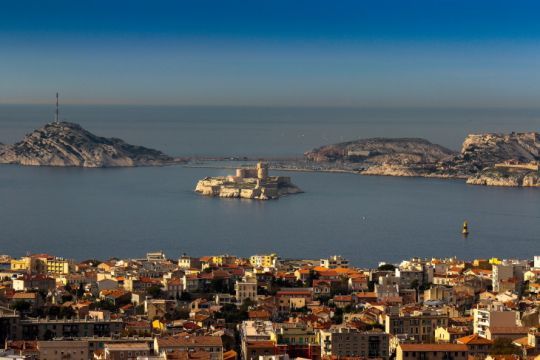
Among the remarkable features of the château d'If are the graffiti, left as witnesses of the past by prisoners, visitors and soldiers who have passed through. Some are real works of art, others are simple memories of the past. Obviously, leaving the mark of modern visits in these secular walls is out of the question. A wall of free expression and a guestbook have now taken the place of these murals.
The castle of the bull (2)
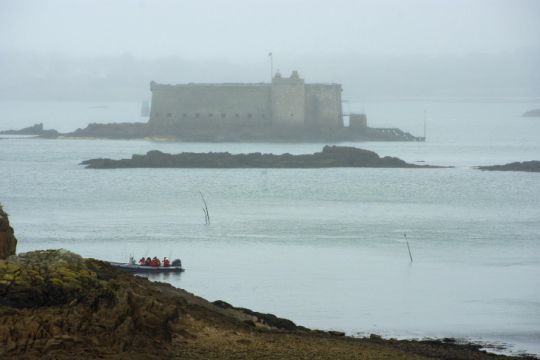
In 1542, it became necessary to protect Morlaix, the third port of Brittany behind Nantes and Saint-Malo. Thanks to the castle installed in the bay, the attacking ships were thus forced to bypass the defense from the west, where they were easily reached by the artillery in place.
In the XVIIth century, Vauban marked the Château du Taureau with works that lasted 45 years. The objective was to build a stronger and larger fort. The building has an oblong shape that follows the rock. It is 60 meters long, 12 meters wide and 12 meters high with a built-up area of 1,450 m2. There are 11 casemates, each equipped with a cannon. The site also houses housing for soldiers and officers, as well as two dungeons, a canteen, a kitchen, a chapel and latrines.
Even before Vauban's great transformations were completed, the defense of Morlaix became less of a priority and the place was converted into a prison. For the anecdote, if it was possible to be imprisoned for almost any reason (libertinage, a mésalliance, madness, an immoderate taste for alcohol or gambling), the incarceration expenses are covered by the families. And when they don't pay, the prisoners are released!
During the Second World War, the fort was taken by the Germans who installed a defense system against aviation ( DCA ). When peace returned, it was in 1960 that the Association du Centre Nautique de la Baie de Morlaix set up a sailing school which welcomed up to 250 trainees simultaneously.

The castle is only accessible by boat, regardless of the tidal range. The site has no toilets, no running water and animals are not allowed.
The citadel of Port Louis (3)
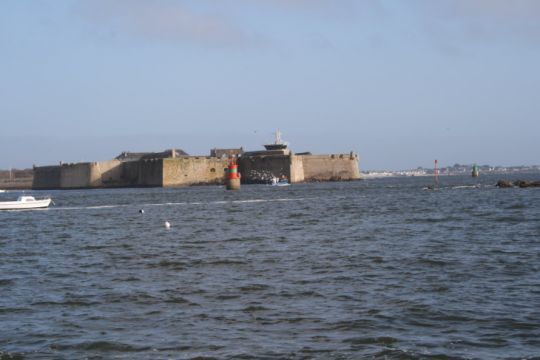
The citadel of Port-Louis is Spanish of construction. It is in the XVIIth century that the French modified the citadel closing the access to the roadstead of Lorient.
François II, Duke of Brittany, first planned to build a bastion to protect the strategic Breton harbor in 1486. It was finally in 1591, a century later, that the Spaniards, led by Cristobal de Rojas, started the construction of this fort, on a rocky point at the entrance of the harbor. The work was spread over nearly two centuries, because it was in 1664, when the East India Company was established in Port-Louis, that the construction work was finally completed.
Remained a military work until 2007, the citadel of Port-Louis will be taken and occupied by the occupying troops during the Second World War. Since then, it has been used to monitor maritime traffic. And, above all, it has become one of the components of the Musée de la Marine, presenting the collection of the Compagnie des Indes as well as a fascinating section devoted to sea rescue.
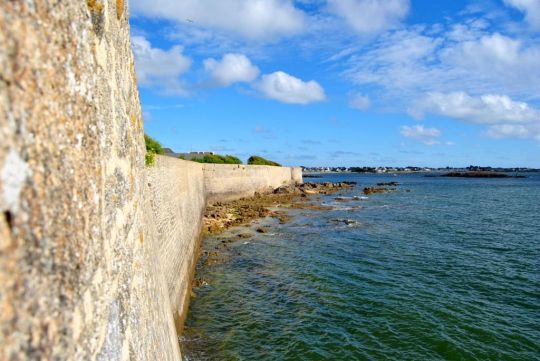
Located on land, the Citadel of Port Louis can be visited all year round.
The little lobsterman (4)

The fort du petit langoustier is probably one of the most modest fortresses of the French coast. It was built in the 17th century in a hurry by Richelieu in order to protect Toulon from enemy fleets, together with other forts. This situation made it possible to cross fire in the pass, preventing enemy ships from entering.
It is today an association, Les amis du Petit Langoustier euros Fort en mer à Porquerolles, which manages the restoration of the fort and its - rare - openings to the public. All the more rare as the site is difficult to access and the renovations are made according to the possibilities of the members, volunteers, of the structure.
This is no ordinary restoration. The craftsmen who are working to restore this fort to its original state - or almost - are making sure that they do so using values that were important at the time. The fort being deprived of electricity, water and telecommunications, it is without these technical capacities that the work is carried out. The program therefore included old-fashioned mortar and building stones used at the time. And, above all, the use of as few public funds as possible, to reduce both the ecological and economic impact of this restoration.
The 40-year lease established for the benefit of the association allows for a long and rigorous phase of work, which aims to restore the fort to its original state, using all the methods of the time of construction. It also aims to study and reduce as much as possible the impacts of modern lifestyles, especially through the recycling of water and waste.
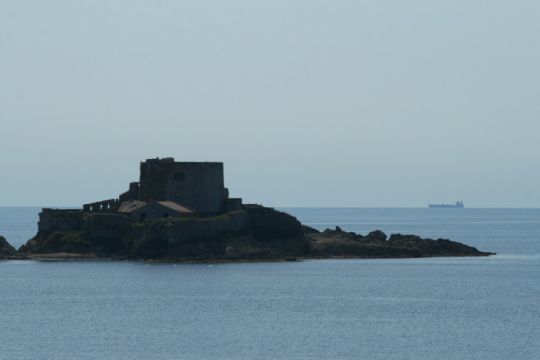
The fort is rarely open to visitors, its approach is complicated and dangerous and the respect due to those who work there makes it a place to look at, admire and greet from afar, from the Mediterranean.
The fort of the Conchée (5)
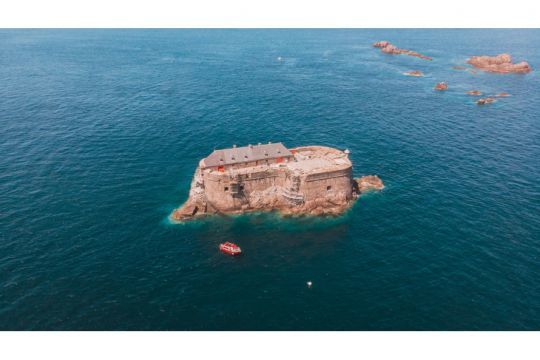
It is in the bay of Saint-Malo that Vauban built this fort-ilôt of the Conchée. Surprisingly, the construction covers almost the entire eponymous rock. It is to counter the English attacks that Vauban starts the construction of the fort in 1692.
The place is ideal. Not exceeding more than 5 to 6 meters by strong tides, the rock is located very close to the Normans' pit this is a smooth sand bank without rocks, ideal for anchoring privateer ships that would serve the more or less legitimate interests of the French crown at the time.
In 1730, the work as it stands today was completed. Left abandoned after its demilitarization in 1889, the fort served as a target for the German skirmishers who occupied the Corsair City during the war. The liberators of Saint-Malo only had to complete the work started by the occupiers, by bombing the fort in their turn during the liberation of the city, in 1944.
Classified as a historical monument in 1984, the fort is constantly being renovated and rebuilt. Beaten by the violent currents of the English Channel, it is located at the southern mouth of the passage of the rout, a violent current running along the Cotentin. It is, moreover, the sea that, in 1820, caused the most damage to the fort in its entire history.
Since 1989, the fort has been the common property of about twenty people, gathered around the " company of the friends of the Conchée "who work, under the supervision of an architect of historical monuments, to maintain it in condition.
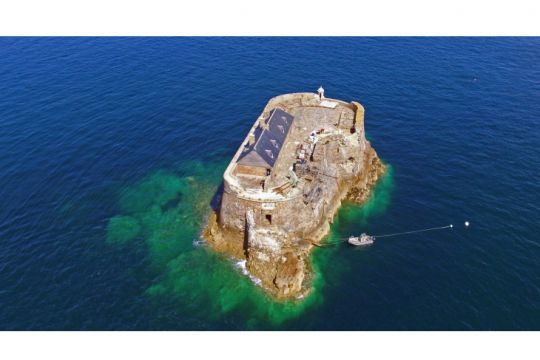
The fort can be visited during heritage days. The landing is particularly dangerous. The only anchorage at the foot of the fortress is used by restaurant owners who go to the Conchée every weekend.
Fort Boyard (6)
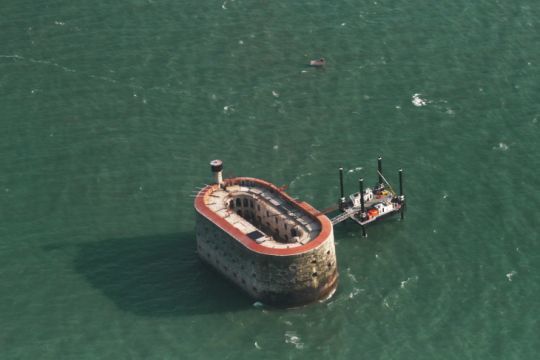
Probably the most famous fort in France, because of the eponymous TV show, Fort Boyard is located on the coast of Charente. The objective is to protect Rochefort from attacks coming, in particular, from the English neighbors.
One hour away from La Rochelle, Fort Boyard is only accessible by boat.
In 1666, when the construction of the Rochefort arsenal was completed, it was planned to build a fort to protect access to it. The project, entrusted to Vauban, made the architect himself say to King Louis XIV " Sire, it would be easier to seize the Moon with your teeth than to attempt such a task in this place ".
It was finally in 1841 that the fort as it exists today was built, after much political, financial and military procrastination. Built too late, it was not used to defend the coast, but only as a prison.
Abandoned in the 1920s, the fort was bought at the end of the 1980s by Jacques Antoine, a game show producer, and became, after several years of repair and refurbishment, the location for the filming of the show " Fort Boyard "in its French version. It is also a place of shooting of numerous films (Le Repos du guerrier, Liberté-Oléroneuros).
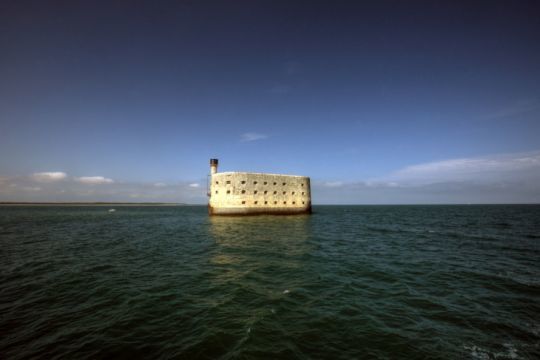
The fort can be visited outside of the shooting days.
Fort des Îles Saint-Marcouf (7)
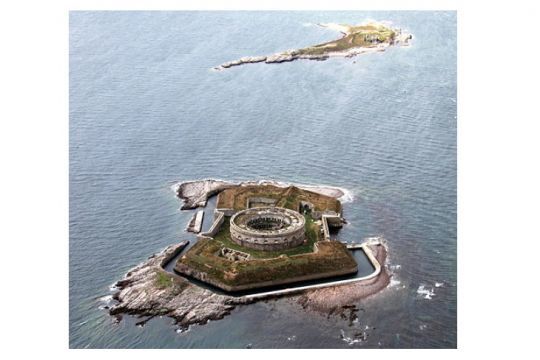
The Saint-Marcouf Islands are an archipelago located in the east of the Cotentin peninsula, in the Manche department (50). In the heart of the Seine Bay, it was occupied by the English as early as 1795. Its strategic location allowed the occupants to disrupt all trade coming from or going to Cherbourg, Rouen and the surrounding towns, having an impact as far as Paris, the capital of France.
In 1800, Emperor Napoleon I commissioned the first war submarine, the Nautilus. In 1802, with the signing of the Peace of Amiens, the British returned these territories to France.
The fort we are interested in is built on the island of the sea. It is the second island of the archipelago, after the Île de Terre, an ornithological reserve of 3.40 hectares, also forbidden to land.
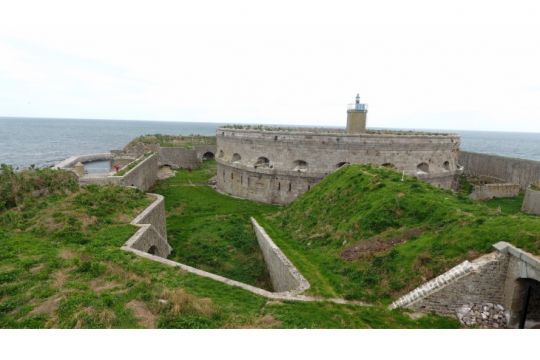
The offshore island has been classified as a historical monument since 2017. Thus, every summer, associations intervene on the spot to try to counter the ravages of time, reassembling walls, buttresses and dikes, with the support of the State, companies and local authorities.

 /
/ 